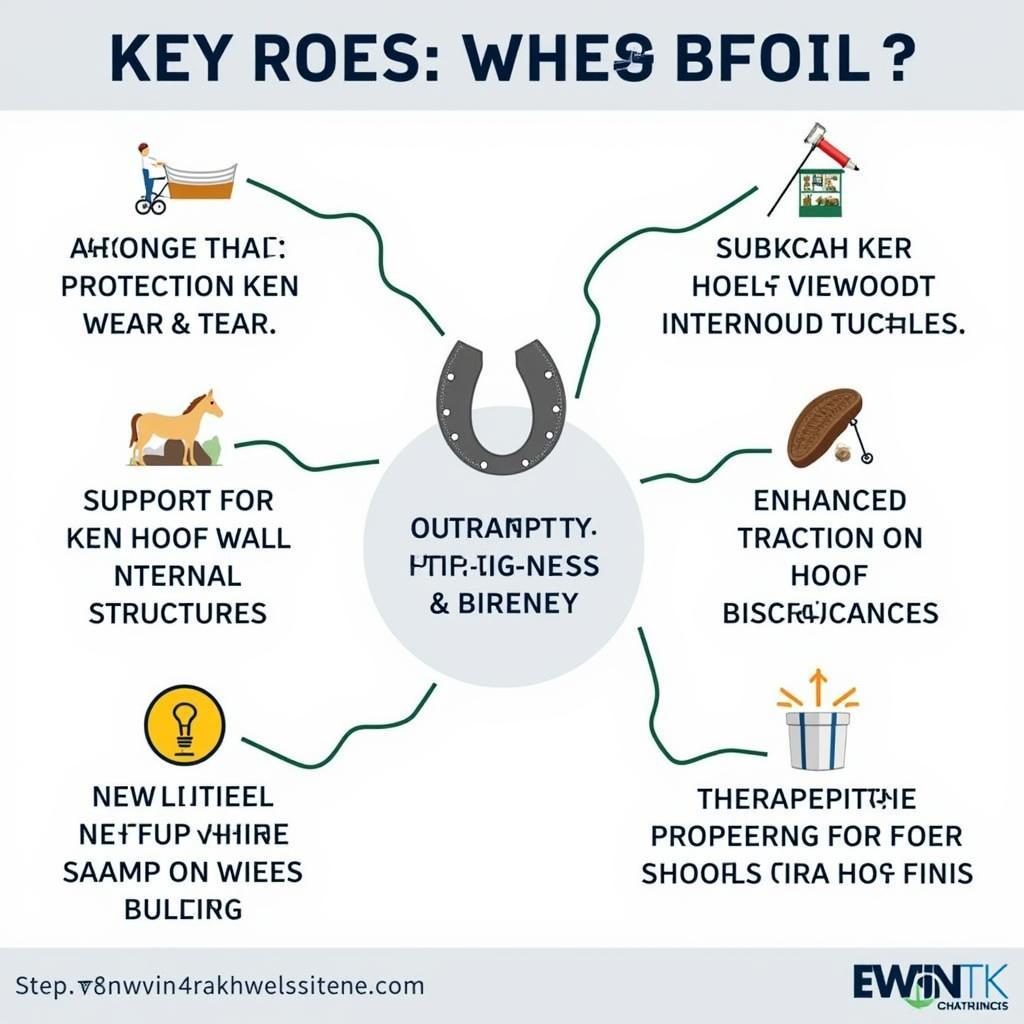Steel Horse Shoes have been a staple in equine care for centuries, providing protection and support for horses’ hooves. This guide delves into the world of steel horse shoes, exploring their benefits, different types, the shoeing process, and how to ensure proper care for your shod horse. Let’s explore the essential aspects of steel horse shoeing.
Choosing the right steel horse shoes is crucial for your horse’s well-being and performance. Factors like the horse’s breed, discipline, and hoof condition all play a role in selecting the appropriate shoe. For example, a draft horse performing heavy work will require a different shoe than a Thoroughbred racehorse. Understanding these nuances can greatly impact your horse’s comfort and soundness. You might also consider natural balance horse shoes for a more natural approach.
Types of Steel Horse Shoes
There are numerous types of steel horse shoes designed for various purposes. Some common types include:
- Regular Shoes: These are the standard, everyday shoes used for general riding and light work.
- Bar Shoes: These shoes provide extra support for horses with weak heels or specific hoof conditions.
- Heart Bar Shoes: A variation of the bar shoe, offering even more support to the frog and heels.
- Rim Shoes: These shoes feature a wider rim for increased traction and stability.
- Specialty Shoes: Designed for specific disciplines like racing, jumping, or therapeutic purposes.
Choosing the right shoe can significantly influence the horse’s movement and overall hoof health. Consult with a farrier to determine the most appropriate type for your horse’s individual needs.
The Shoeing Process: A Step-by-Step Guide
Shoeing a horse is a skilled craft requiring expertise and precision. While it’s best left to a qualified farrier, understanding the process can be beneficial for horse owners. The steps generally involve:
- Preparation: Cleaning and trimming the hoof.
- Assessment: Evaluating the hoof’s condition and determining the appropriate shoe type.
- Shaping: Shaping the shoe to fit the hoof precisely.
- Nailing: Attaching the shoe to the hoof wall with specialized nails.
- Finishing: Clinching and filing the nails for a smooth and secure fit.
This intricate process ensures the shoe is properly fitted and provides optimal support. Proper shoeing is vital for maintaining healthy hooves and preventing lameness. For the right equipment, consider our selection of horse shoeing tools.
Caring for a Shod Horse
Proper care is essential for maintaining the health of a shod horse. Regularly check for loose or missing shoes and any signs of discomfort. Keep the hooves clean and dry to prevent thrush and other hoof problems. Consult with your farrier to establish a regular shoeing schedule, typically every 4-8 weeks, depending on the horse’s individual needs and activity level.
Why Choose Steel Horse Shoes?
Steel horse shoes offer numerous benefits, including:
- Protection: Shielding the hoof from wear and tear, especially in rough terrain.
- Support: Providing support to the hoof wall and internal structures.
- Traction: Enhancing grip on various surfaces.
- Correction: Addressing hoof imbalances and promoting correct growth.
- Therapeutic Benefits: Aiding in the treatment of certain hoof conditions.
These benefits contribute significantly to the horse’s overall soundness and well-being. Consider also exploring golden horse skates for a luxurious alternative.
Are Steel Horse Shoes Right for My Horse?
This depends on several factors including the horse’s activity level, hoof condition, and individual needs. Consulting with a qualified farrier and veterinarian is crucial in making the best decision for your horse. They can assess your horse’s specific circumstances and recommend the most appropriate hoof care strategy. For those interested in Western riding, you might also like our collection of western horse belt buckles.
 Benefits of Using Steel Horse Shoes for Equine Hoof Protection
Benefits of Using Steel Horse Shoes for Equine Hoof Protection
In conclusion, steel horse shoes play a vital role in equine care, offering protection, support, and various therapeutic benefits. Understanding the different types of shoes, the shoeing process, and proper care for a shod horse is essential for any horse owner. Choosing the right shoe and ensuring regular farrier visits are crucial for maintaining your horse’s hoof health and overall well-being. Remember, consulting with a qualified farrier is always the best first step in determining the most suitable hoof care plan for your equine companion.
FAQ
- How often should my horse be shod?
- What are the signs of a loose or missing shoe?
- Can my horse go barefoot?
- How do I choose the right type of steel shoe for my horse?
- What are the costs associated with horse shoeing?
- What is the difference between hot and cold shoeing?
- How can I tell if my horse’s shoes are causing discomfort?
Common Scenarios and Questions
-
Scenario: My horse keeps pulling off its shoes.
- Question: What can I do to prevent my horse from pulling off its shoes?
-
Scenario: My horse is showing signs of lameness after being shod.
- Question: Could the shoeing be causing the lameness, and what should I do?
Further Resources
You can find more information about horse trailer maintenance in our article on horse trailer axles.
Contact Us
For further assistance, please contact us at Phone: 0772127271, Email: [email protected] or visit us at QGM2+WX2, Vị Trung, Vị Thuỷ, Hậu Giang, Việt Nam. Our customer service team is available 24/7.